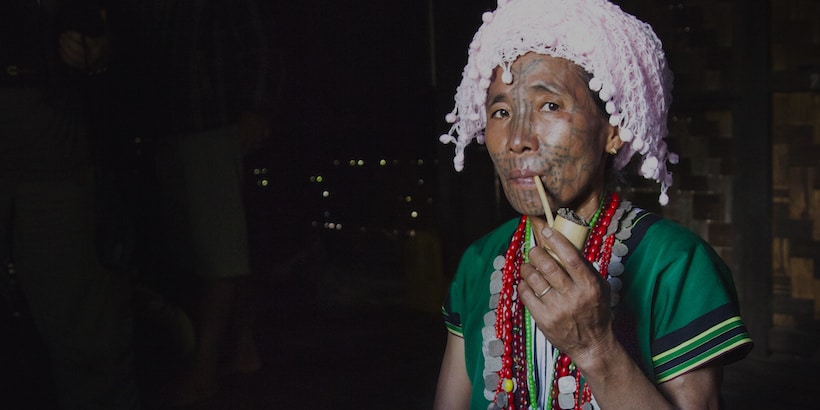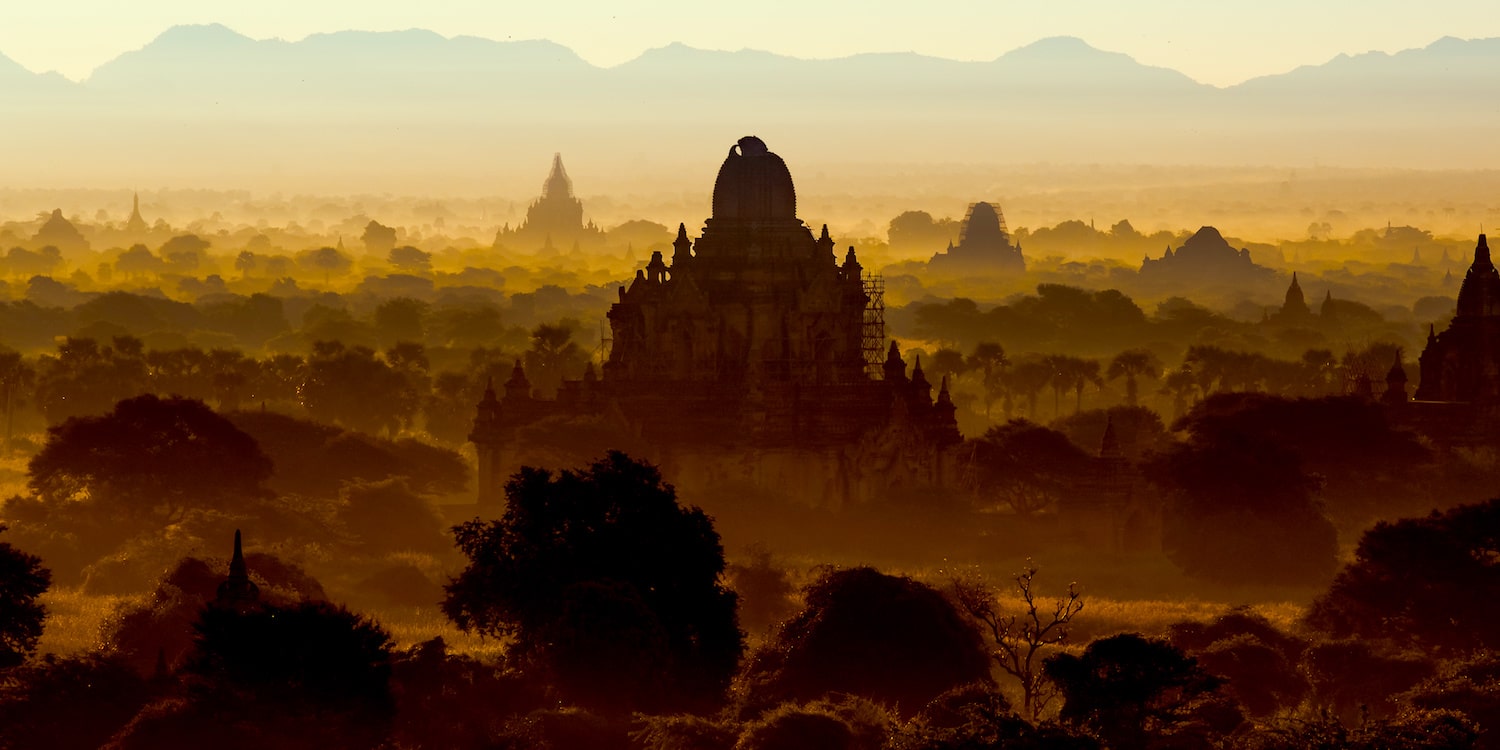Burmese Culture for Foreigner Visitors
Something important to bear in mind before your trip
Heavily influenced by Buddhism and relatively recent British, sharing much in common with its neighbors, developing branches on its own, Burmese culture itself is an infinite treasure trove. Learn about the taboos, dos and don'ts before your trip to this amazing country.
[wpseo_breadcrumb]
4 Things about Burmese Cultures ...
- The four most culturally significant periods in history are Pyu city-states (200BEC - 1050CE), Pagan Dynasty (849 - 1297), Taungoo Dynasty (1510 - 1752) and British rule (1824 - 1948) .
- Burmese cultures can be roughly interpreted as Buddhism cultures, individual pursuit for ultimate enlightenment and monastic lifestyles penetrate into every aspect of life.
- Burmese often impress the outsiders for being modest, self-reserved, friendly, eager to help, and no severe emotion display, which is part of their awareness of proper etiquette.
- Respecting their religious beliefs tops all watch-outs for foreign travelers. And there's more.
Cultural Taboos, Dos & Don'ts in Different Aspects
As impossible and unnecessary to elaborate the origins and evolutions of Burmese cultures as it is, you, as any foreign traveler would need is to simply grasp the cultural key elements. Also, we will introduce you the way to conduct in different aspects.
Religion & Practices

Theravada Buddhism is prominent while Nat worship is practiced in some hill tribes and smaller cities. Burmese people believe that only by minimizing material desires and doing good merits can one be truly enlightened.
Daily worship, monastic life, becoming a monk/nun at least once in a lifetime, these are the basics. Besides these, good merits come in various forms: building up or gold-layering up pagodas, donating to temples or religious events, offering alms, becoming a monk/nun and helping out anybody in need and etc.
How to Conduct:
- Respect their practices and religious edifices: don't interrupt any ongoing rituals, take off footwear before entering a religious site, keep clean with the religious argument and donation is always welcome.
- Receive kindness: Burmese are very helpful and mostly not going for the money (except for some scams where people approaching you with offers too dreamy for no reason). When offered with any help or kindness, just say thank you.
Men, Women and Family Life

Because of their hpon (PONE, or spiritual status in Buddhism concept), men always have a higher place than women do. Becoming a monk is mandatory for men: once at a young age of 7 years old and the other one (which will likely lead to lifelong) is when he's accomplished his earthly goal: raising up a family. For women, entering a nunnery is a choice while some less-privileged families would send their girls to the nunnery for food, medical care, and education.
Inside a Burmese house, men are the householders who turn in all incomes to their wives. Seniors, regardless the gender, always take the most important seat but normally have no say in big decisions. It's common for up to 4 generations living under the same roof.
How to Conduct:
- Off-limit areas for females: There are some certain areas and occasions that women are not included, such as the platform of Shwedagon Pagoda or the Golden Rock in Kyaiktiyo. Female travelers should respect this and stay away. And female visitors shall not touch monks or novices.
- Burmese women are not looked down upon: It's important for foreigners to understand the different status of each gender. While considered less important in the spiritual life, with a certain tradition of being independent while growing up, Burmese women have equal social rights and are now playing more and more important roles.
- Family names can be confusing: Burmese don't actually have family names. Instead, they are addressed by either the age ranking of the family or surnames can be changed at will.
Ethnic Minorities and Their Lifestyles

Myanmar is Southeast Asia's most ethnically diverse country and there are 135 distinct ethnic minority groups. Bamar, Chin, Kachin, Kayin, Kayah, Mon, Rakhine and Shan are the eight major national ethic races. Other 100-some smaller ethnic groups scatter mostly in the northern hills and the western border. There is a remarkable portion of ethnic minorities that are former refugees from Tibet and China; today you can also encounter some traveling Thai who take home seasonally in Myanmar and work along / for the locals.
These ethnic minority groups and their fascinating lifestyles and cultures never cease to inspire travelers. To make your own encounter, one might consider hiking trips to the mountainous areas; homestay would be even better.
How to Conduct:
- Different religions: While most of the 100-some ethnic minority groups practice Theravada Buddhism, up in the northern parts you can find some lovely Catholic and Baptism churches. Nat worship in the central and north is also an interesting topic, with Mt.Popa being the mecca.
- Permit might be required: Due to some political reasons, travelers are required to have a permit for roaming in certain ares. Procedure can only be handled by local-registered travel agents. For more details, please check: Restricted Areas in Myanmar.
- Political subjects are no good: This rule actually applies to all regions in Myanmar.
- Is it wrong to visit? We do hear some debate over this, especially after some horrible news in recent years. However, we'd say it's nothing against non-ethical as these hill tribes are not make-believe veneers (as what Thailand has, sadly). Given everything is conducted properly, your visit can actually help the local communities.
Dress Code

Don't be surprised to see your driver in a long dress and flip-flop! The most distinctive thing about clothing in Myanmar is that all men and women wear a skirt -- Longyi. Longyi is traditional daily wear that is a long sheet of cloth wrapped up on the bottoms. Burmese wear flip-flops everywhere they go, either to the market or at a formal meeting. Younger generations normally wear T-shirts, jeans and sometimes sneakers. Hint: some T-shirt and sneakers would make great gifts for local kids.
The basic idea is to cover the skin as much as possible, even when you are on a beach. Locals wear T-shirts and jeans while going swimming. Although you don't have to do the same, bikini or even worse nude sunbathing will not be well received.
Local females don't usually do heavy makeup. The only, also most popular, makeup for Burmese women is Thanaka paste. This yellowish-white paste is made from ground bark, using as sunscreen, acne treatment, and skin softener.
How to Conduct:
- The dress code at religious sites: No lower part of the body shall be exposed at temples, monasteries or any religious sites. Same rule for both men and women of all ages.
- Color taboos: Burmese people like to wear white, green, yellow, red and other bright colors. Monks are in earthy yellow while nuns are in pink. Almost every color will do but black somehow reminds them of bad luck.
- Seasonal packing: The weather tends to be hot even when you are traveling during the dry season, so pack light, sunglasses and hat are always the basics. In the rainy season, it's smart to bring speed-dry clothing (also for trekking journeys).
Miscellaneous

Besides all mentioned above, there are some miscellaneous tips for travelers to Myanmar:
- Dining manners: When visiting a local home, you will be likely sitting on the ground with the family. There's a low table and food is served in small plates all at once. Elderlies and guests serve themselves first; leaving some rice in your plate suggests you need some more rice.
Burmese don't drink alcohol; juices or tea will be served. Locals like to eat with their own fingers but a spoon is used for dispatching the food. One should eat with his left hand, which is considered as the clean one. When you're done taking your serve, don't hit the pot or bowl with the ladle or spoon, which is considered as cursing on your parents' health. - Communication: Burmese people don't talk loud, either in public or in private. Sometimes communication can be vague as people are more indirect with strangers. Arguing, discussion and criticisms on politics, affection display and talking loud on your phone in public will be considered as vulgar (nobody is gonna step out and stop you, though).
- Touch me not: Most taboos are involved touching anything or anybody wily-nilly, especially for patting on a child's head or somebody's shoulder. Physical contact between different genders will be frown upon.
- Concept of time: For Burmese it's totally okay to be late no matter the occasion. Trains and buses are always running late; that's no surprise. But in tourism, guides and drivers keep up with the western standards.
- Superstitions: Superstitions still have strong impact in rural Myanmar. Leaving a shoe or flip-flop upside down, or broken glasses indoor is the cause for misfortune; walking under a clothesline used to dry women's clothing or a staircase will cast your will power to the devil.
After clipping, always throw away the fingernails and toenails or poverty will come upon the house. And singing at the dinner table seems to bring the same effect.
White elephants are regarded as the most auspicious of all animals; taking a hair of an elephant's tail wards you off evil. To obtain good luck or make decisions, rural Burmese will turn to sorts of astrology, black magic and animism mixed with traditional religions and modern technology.
Start Planning Your Trip to Myanmar
Contact an expert in Myanmar that will support you 1-1 from the initial chat, itinerary design, and even on the trip.

